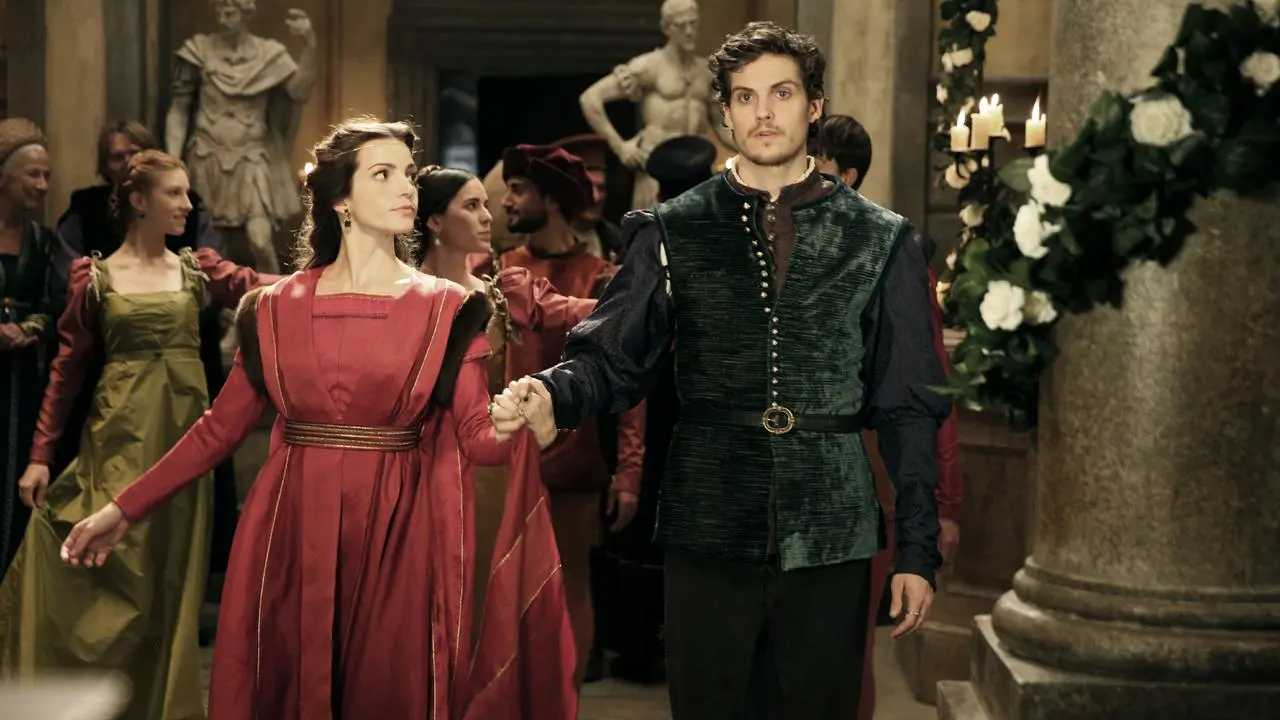
We use cookies
We use cookies and other tracking technologies to improve your browsing experience on our website, to show you personalized content and targeted ads, to analyze our website traffic, and to understand where our visitors are coming from.

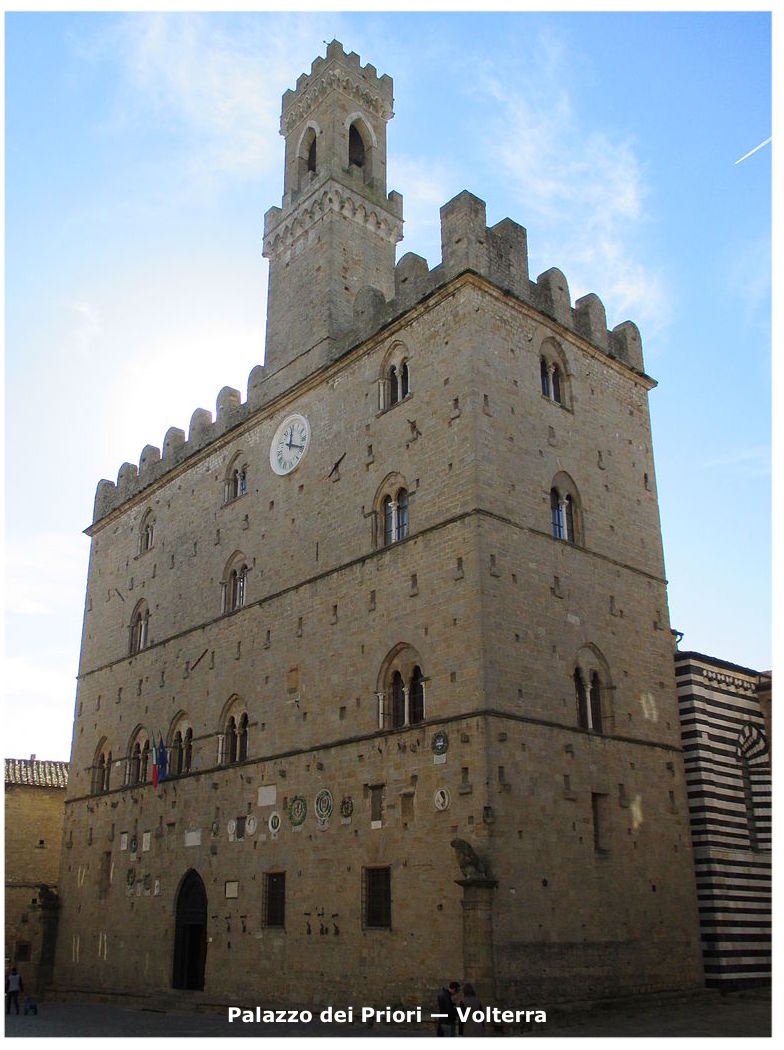 The second season of Medici — Masters of Florence takes a two decade jump forward from the ending of the first. In the latter half of the 1400s, young Lorenzo de’ Medici has decided that it is worth making many enemies to keep the peace in the city. As in the first season, many locations were used to create Renaissance Florence: the facades of the Palazzo Medici are those of Palazzo Piccolomini next to the Duomo in Pienza (SI); the merry-go-round in Piazza Santa Croce for the celebrations of Lorenzo’s wedding to Clarice Orsini was actually in Piazza Grande, Montepulciano (SI), with the roads and squares of the time recreated by covering the cobblestones with earth and brought to life by setting up markets with typical stalls and carts. Other scenes used the historical centre of San Quirico d’Orcia (Porta Cappuccini, Via Poliziano, Via della Piazzola, Palazzo Chigi, Horti Leonini, Mura di Porta Nuova) and Bagno Vignoni (SI). Locations in Florence included the Basilica of San Lorenzo in particular, which the family commissioned from Brunelleschi in 1418. The facade of Palazzo dei Priori in Volterra (PI) stood in for Palazzo Vecchio with its Sala del Maggior Consiglio the location for the meetings of the Consiglio dei Priori, which historically took place in the Sala dei Duecento in the Palazzo Vecchio during Medici rule. The countryside seen outside Florence is actually the area around Val d’Orcia (SI), further south.
The second season of Medici — Masters of Florence takes a two decade jump forward from the ending of the first. In the latter half of the 1400s, young Lorenzo de’ Medici has decided that it is worth making many enemies to keep the peace in the city. As in the first season, many locations were used to create Renaissance Florence: the facades of the Palazzo Medici are those of Palazzo Piccolomini next to the Duomo in Pienza (SI); the merry-go-round in Piazza Santa Croce for the celebrations of Lorenzo’s wedding to Clarice Orsini was actually in Piazza Grande, Montepulciano (SI), with the roads and squares of the time recreated by covering the cobblestones with earth and brought to life by setting up markets with typical stalls and carts. Other scenes used the historical centre of San Quirico d’Orcia (Porta Cappuccini, Via Poliziano, Via della Piazzola, Palazzo Chigi, Horti Leonini, Mura di Porta Nuova) and Bagno Vignoni (SI). Locations in Florence included the Basilica of San Lorenzo in particular, which the family commissioned from Brunelleschi in 1418. The facade of Palazzo dei Priori in Volterra (PI) stood in for Palazzo Vecchio with its Sala del Maggior Consiglio the location for the meetings of the Consiglio dei Priori, which historically took place in the Sala dei Duecento in the Palazzo Vecchio during Medici rule. The countryside seen outside Florence is actually the area around Val d’Orcia (SI), further south.
A great art lover, Lorenzo was already a prolific patron of talented artists as a young man: a scene set in a room in the Palazzo dei Medici sees him conversing with Botticelli and Poliziano. This was shot in the Sala della Fontana in Villa d’Este, Tivoli (RM).
In the opening scene of the first episode, Lorenzo and Giuliano leave for Florence on horseback. The villa they depart from is the Palazzina Gonzaghesca in Bosco Fontana (MN).
As the Vatican’s bankers, the members of the Medici family are in constant contact with the highest ranks of the clergy to ensure the solidity of their alliance with the Church. The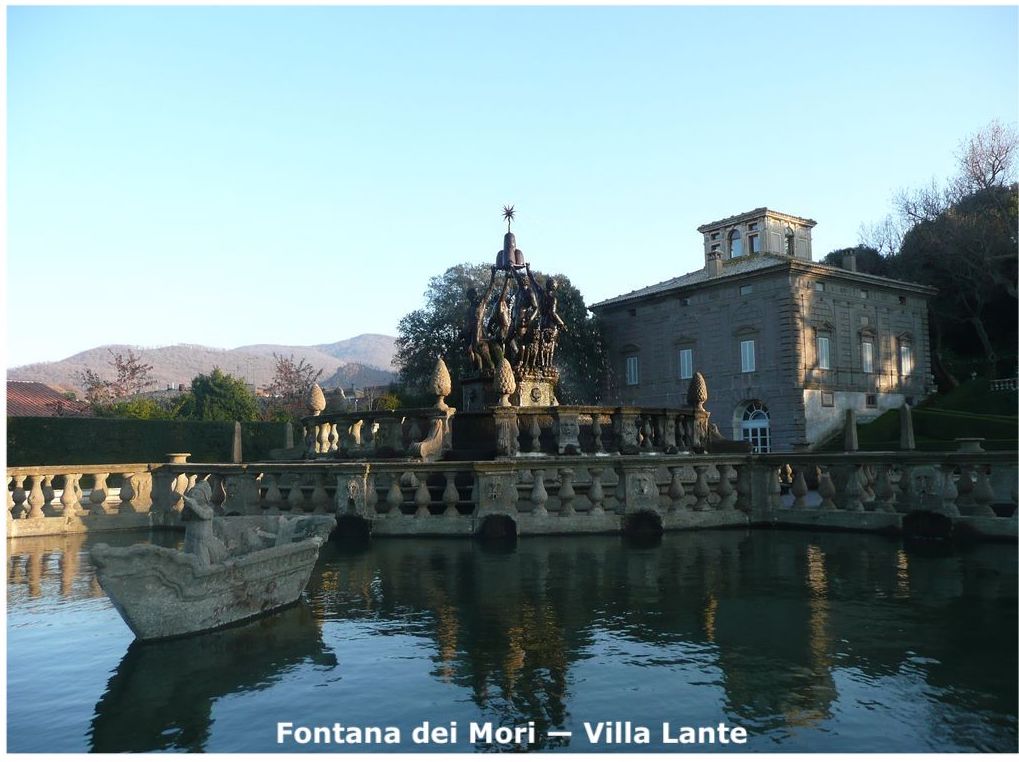 facade of the Palazzo Apostolico in Rome is actually that of the Palazzo dei Papi in Viterbo, recognisable by its splendid Loggia delle Benedizioni. The interiors of the Vatican are those of the Palazzo Ducale in Mantova. In particular, the Sala del Manto was used as the setting for the papal throne when Francesco della Rovere is crowned Pope Sixtus IV.
facade of the Palazzo Apostolico in Rome is actually that of the Palazzo dei Papi in Viterbo, recognisable by its splendid Loggia delle Benedizioni. The interiors of the Vatican are those of the Palazzo Ducale in Mantova. In particular, the Sala del Manto was used as the setting for the papal throne when Francesco della Rovere is crowned Pope Sixtus IV.
While Lorenzo tries to keep the family honour high in Florence by taking part in the jousting tournament (shot on location in Piazza Grande, Montepulciano), his mother Lucrezia stays in Rome to solve problems with diplomacy. The main location here is Villa Lante in Bagnaia (VT) whose magnificent gardens and Giambologna’s Fontana dei Mori often provide the setting for the Pope’s walks with his guests.
Locations in and around Rome include the Parco degli Acquedotti and Ponte Milvio, where we often see the main characters riding; Villa Giulia, especially the hemicycle with its frescoed portico which served as the setting for the wedding of Lorenzo and Clarice Orsini and the Sala dello Zodiaco which was used for Lorenzo’s study; Palazzo della Cancelleria and Villa Parisi in Frascati.
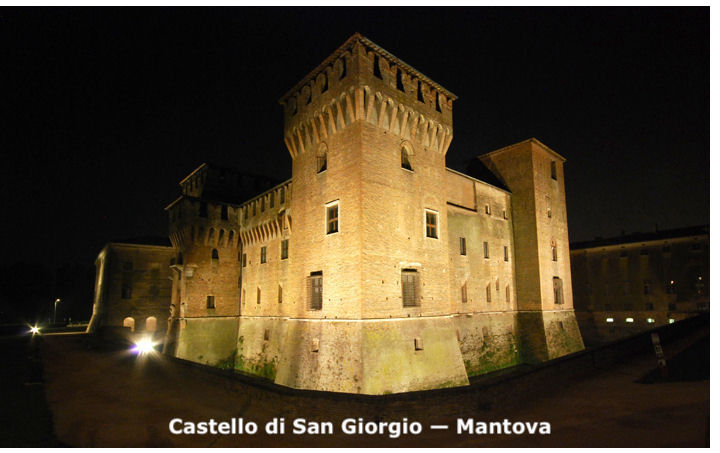 To save his bank, Lorenzo is forced to make an alliance with Duke Galeazzo Maria Sforza. The Porta Imperiale of Sabbioneta (MN) served as the entrance into Milan, and through a feat of editing, the Castle of St. George in Mantova can be glimpsed in the background disguised as the imagined Sforza Castle of the 1400’s. The castle interiors where the life of the Milanese court takes place, including the wedding of little Caterina Sforza, the Duke’s illegitimate daughter, to 30 year old Girolamo Riario, are those of Palazzo Te in Mantova. Caterina’s wedding banquet takes place in the Sala dei Cavalli, frescoed by Giulio Romano between 1527-28. The murder of Galeazzo Maria Sforza, which historically took place in the Church of St. Stephen in Milan, used the Rotonda di San Lorenzo, an 11th century church in Mantova, as the location.
To save his bank, Lorenzo is forced to make an alliance with Duke Galeazzo Maria Sforza. The Porta Imperiale of Sabbioneta (MN) served as the entrance into Milan, and through a feat of editing, the Castle of St. George in Mantova can be glimpsed in the background disguised as the imagined Sforza Castle of the 1400’s. The castle interiors where the life of the Milanese court takes place, including the wedding of little Caterina Sforza, the Duke’s illegitimate daughter, to 30 year old Girolamo Riario, are those of Palazzo Te in Mantova. Caterina’s wedding banquet takes place in the Sala dei Cavalli, frescoed by Giulio Romano between 1527-28. The murder of Galeazzo Maria Sforza, which historically took place in the Church of St. Stephen in Milan, used the Rotonda di San Lorenzo, an 11th century church in Mantova, as the location.
The ferocious rivalry with the Pazzi family also leads to the engagement of the city of Pisa. The city is closed to block the entrance of the bishop chosen by the Pope. In this scene, the leaning tower that symbolizes the city can be glimpsed beyond that which should be Porta Nuova but is actually Porta Vittoriosa in Sabbioneta.
Another note of interest: several locations were decorated with paintings whose real locations are very distant from the actual sets. These include: the Fresco of the Month of March by Francesco del Cossa which is preserved in the Salone dei Mesi in Palazzo Schifanoia in Ferrara and can be seen behind the sick Piero de’ Medici; the Fresco of the Six Ancient Sages, a masterpiece by Perugino in the Collegio del Cambio in Perugia, features in the bedchamber of Lorenzo the Magnificent; and the central panel of the Tryptych of St. Vincent, by the Portuguese painter Nuño Gonçalves, kept in Lisbon’s Museu Nacional de Arte Antiga can be seen in the drawing room of the Palazzo Vespucci, where Botticelli meets his Venus.
 The second season of Medici — Masters of Florence takes a two decade jump forward from the ending of the first. In the latter half of the 1400s, young Lorenzo de’ Medici has decided that it is worth making many enemies to keep the peace in the city. As in the first season, many locations were used to create Renaissance Florence: the facades of the Palazzo Medici are those of Palazzo Piccolomini next to the Duomo in Pienza (SI); the merry-go-round in Piazza Santa Croce for the celebrations of Lorenzo’s wedding to Clarice Orsini was actually in Piazza Grande, Montepulciano (SI), with the roads and squares of the time recreated by covering the cobblestones with earth and brought to life by setting up markets with typical stalls and carts. Other scenes used the historical centre of San Quirico d’Orcia (Porta Cappuccini, Via Poliziano, Via della Piazzola, Palazzo Chigi, Horti Leonini, Mura di Porta Nuova) and Bagno Vignoni (SI). Locations in Florence included the Basilica of San Lorenzo in particular, which the family commissioned from Brunelleschi in 1418. The facade of Palazzo dei Priori in Volterra (PI) stood in for Palazzo Vecchio with its Sala del Maggior Consiglio the location for the meetings of the Consiglio dei Priori, which historically took place in the Sala dei Duecento in the Palazzo Vecchio during Medici rule. The countryside seen outside Florence is actually the area around Val d’Orcia (SI), further south.
The second season of Medici — Masters of Florence takes a two decade jump forward from the ending of the first. In the latter half of the 1400s, young Lorenzo de’ Medici has decided that it is worth making many enemies to keep the peace in the city. As in the first season, many locations were used to create Renaissance Florence: the facades of the Palazzo Medici are those of Palazzo Piccolomini next to the Duomo in Pienza (SI); the merry-go-round in Piazza Santa Croce for the celebrations of Lorenzo’s wedding to Clarice Orsini was actually in Piazza Grande, Montepulciano (SI), with the roads and squares of the time recreated by covering the cobblestones with earth and brought to life by setting up markets with typical stalls and carts. Other scenes used the historical centre of San Quirico d’Orcia (Porta Cappuccini, Via Poliziano, Via della Piazzola, Palazzo Chigi, Horti Leonini, Mura di Porta Nuova) and Bagno Vignoni (SI). Locations in Florence included the Basilica of San Lorenzo in particular, which the family commissioned from Brunelleschi in 1418. The facade of Palazzo dei Priori in Volterra (PI) stood in for Palazzo Vecchio with its Sala del Maggior Consiglio the location for the meetings of the Consiglio dei Priori, which historically took place in the Sala dei Duecento in the Palazzo Vecchio during Medici rule. The countryside seen outside Florence is actually the area around Val d’Orcia (SI), further south.
A great art lover, Lorenzo was already a prolific patron of talented artists as a young man: a scene set in a room in the Palazzo dei Medici sees him conversing with Botticelli and Poliziano. This was shot in the Sala della Fontana in Villa d’Este, Tivoli (RM).
In the opening scene of the first episode, Lorenzo and Giuliano leave for Florence on horseback. The villa they depart from is the Palazzina Gonzaghesca in Bosco Fontana (MN).
As the Vatican’s bankers, the members of the Medici family are in constant contact with the highest ranks of the clergy to ensure the solidity of their alliance with the Church. The facade of the Palazzo Apostolico in Rome is actually that of the Palazzo dei Papi in Viterbo, recognisable by its splendid Loggia delle Benedizioni. The interiors of the Vatican are those of the Palazzo Ducale in Mantova. In particular, the Sala del Manto was used as the setting for the papal throne when Francesco della Rovere is crowned Pope Sixtus IV.
facade of the Palazzo Apostolico in Rome is actually that of the Palazzo dei Papi in Viterbo, recognisable by its splendid Loggia delle Benedizioni. The interiors of the Vatican are those of the Palazzo Ducale in Mantova. In particular, the Sala del Manto was used as the setting for the papal throne when Francesco della Rovere is crowned Pope Sixtus IV.
While Lorenzo tries to keep the family honour high in Florence by taking part in the jousting tournament (shot on location in Piazza Grande, Montepulciano), his mother Lucrezia stays in Rome to solve problems with diplomacy. The main location here is Villa Lante in Bagnaia (VT) whose magnificent gardens and Giambologna’s Fontana dei Mori often provide the setting for the Pope’s walks with his guests.
Locations in and around Rome include the Parco degli Acquedotti and Ponte Milvio, where we often see the main characters riding; Villa Giulia, especially the hemicycle with its frescoed portico which served as the setting for the wedding of Lorenzo and Clarice Orsini and the Sala dello Zodiaco which was used for Lorenzo’s study; Palazzo della Cancelleria and Villa Parisi in Frascati.
 To save his bank, Lorenzo is forced to make an alliance with Duke Galeazzo Maria Sforza. The Porta Imperiale of Sabbioneta (MN) served as the entrance into Milan, and through a feat of editing, the Castle of St. George in Mantova can be glimpsed in the background disguised as the imagined Sforza Castle of the 1400’s. The castle interiors where the life of the Milanese court takes place, including the wedding of little Caterina Sforza, the Duke’s illegitimate daughter, to 30 year old Girolamo Riario, are those of Palazzo Te in Mantova. Caterina’s wedding banquet takes place in the Sala dei Cavalli, frescoed by Giulio Romano between 1527-28. The murder of Galeazzo Maria Sforza, which historically took place in the Church of St. Stephen in Milan, used the Rotonda di San Lorenzo, an 11th century church in Mantova, as the location.
To save his bank, Lorenzo is forced to make an alliance with Duke Galeazzo Maria Sforza. The Porta Imperiale of Sabbioneta (MN) served as the entrance into Milan, and through a feat of editing, the Castle of St. George in Mantova can be glimpsed in the background disguised as the imagined Sforza Castle of the 1400’s. The castle interiors where the life of the Milanese court takes place, including the wedding of little Caterina Sforza, the Duke’s illegitimate daughter, to 30 year old Girolamo Riario, are those of Palazzo Te in Mantova. Caterina’s wedding banquet takes place in the Sala dei Cavalli, frescoed by Giulio Romano between 1527-28. The murder of Galeazzo Maria Sforza, which historically took place in the Church of St. Stephen in Milan, used the Rotonda di San Lorenzo, an 11th century church in Mantova, as the location.
The ferocious rivalry with the Pazzi family also leads to the engagement of the city of Pisa. The city is closed to block the entrance of the bishop chosen by the Pope. In this scene, the leaning tower that symbolizes the city can be glimpsed beyond that which should be Porta Nuova but is actually Porta Vittoriosa in Sabbioneta.
Another note of interest: several locations were decorated with paintings whose real locations are very distant from the actual sets. These include: the Fresco of the Month of March by Francesco del Cossa which is preserved in the Salone dei Mesi in Palazzo Schifanoia in Ferrara and can be seen behind the sick Piero de’ Medici; the Fresco of the Six Ancient Sages, a masterpiece by Perugino in the Collegio del Cambio in Perugia, features in the bedchamber of Lorenzo the Magnificent; and the central panel of the Tryptych of St. Vincent, by the Portuguese painter Nuño Gonçalves, kept in Lisbon’s Museu Nacional de Arte Antiga can be seen in the drawing room of the Palazzo Vespucci, where Botticelli meets his Venus.
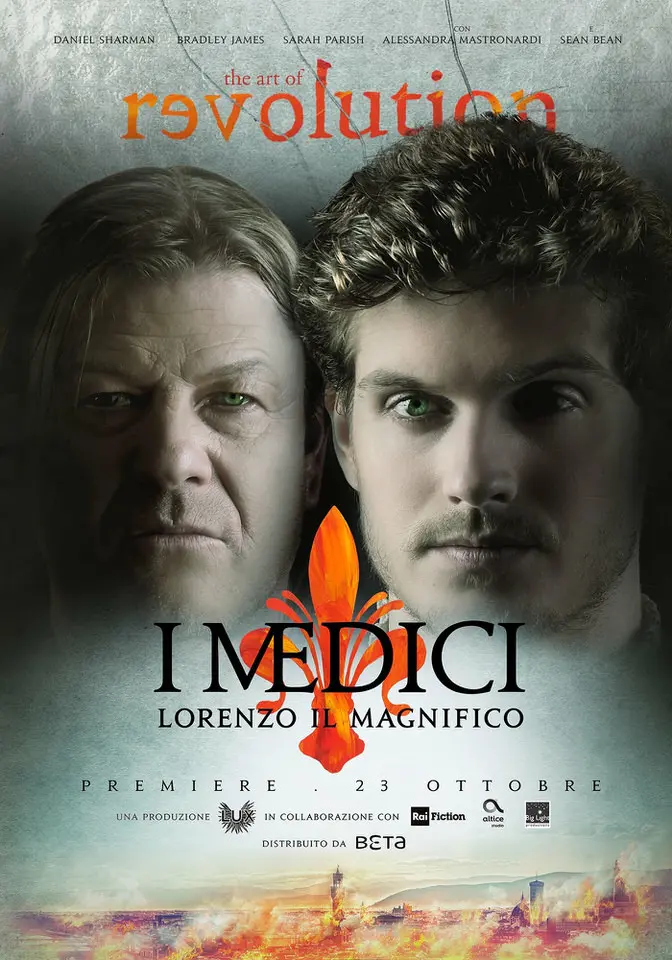
Big Light Productions, Lux Vide, Wild Bunch, Rai Fiction, Altice Studio
Twenty year old Lorenzo de' Medici is dealing with both a moment of great crisis for the family bank and the rivalry of the Pazzi family, Florentines who are looking for any opportunity to snatch domination of the city and the role of Papal bankers from the Medici.